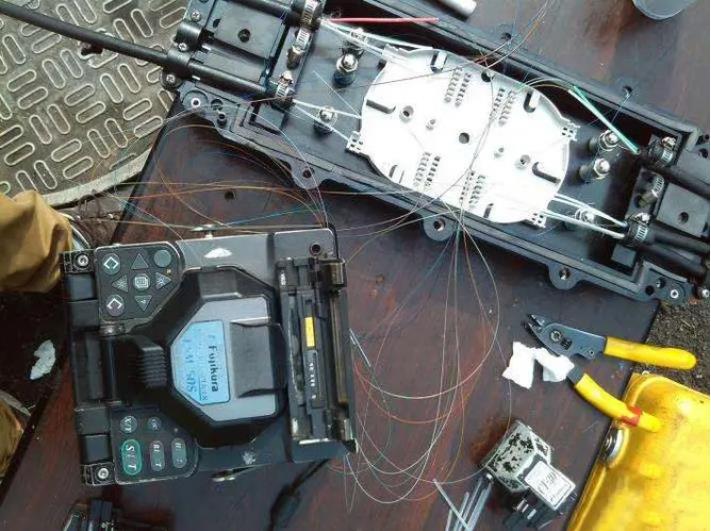
It is a fiber made of glass or plastic that acts as a light conduction tool.
The main purpose of optical fiber is communication. At present, the optical fiber of communication is basically quartz fiber, and its main component is high purity quartz glass, that is, silica (SiO2).
Optical fiber communication system, is to use optical fiber to transmit light wave carrying information, in order to achieve the purpose of communication.
▎ The history of fiber optic communication
Alexander Graham Bell invented the "light phone" in 1880.
In 1887, British scientist Charles Vernon Boys pulled out the first optical fiber in his laboratory.
In 1938, Owens Illinois Glass company of the United States and Nitto Textile Company of Japan began producing long Glass fibers.
In 1951, optical physicist Brian O 'Brian proposed the concept of cladding.
In 1956, a student at the University of Michigan made the first glass-clad fiber by melting a low-index glass tube onto a high-index glass rod.
Theodore Maiman demonstrated the first laser in 1960. This sparked interest in optical communication. Lasers seemed to be a promising way to solve the transmission bandwidth problem, and many laboratories began experimenting.
In 1966, Charles Kao, a Chinese-British scholar, pointed out the possibility and technical way of using optical fiber for information transmission, which laid the foundation of modern optical communication -- optical fiber communication.
In 1970, American Corning company successfully developed quartz fiber with loss of 20dB/km.
In 1973, Bell Laboratory in the United States made even greater achievements, reducing the loss of optical fiber to 2.5dB/km.
In 1976, The Japanese Telegraph and Telephone Company (NTT) reduced fiber loss to 0.47 dB/km(wavelength 1.2μm).
▎ Optical fiber communication features
Huge communication capacity
Theoretically speaking, an optical fiber can simultaneously transmit 10 billion speech channels. At present, the simultaneous transmission of 500,000 speech channels has been successful, thousands or even hundreds of thousands of times higher than the traditional coaxial cable, microwave and so on.
Relay length
Optical fiber has a very low attenuation coefficient, with appropriate optical transmission, optical receiving equipment, optical amplifier, forward error correction and RZ coding modulation technology, can make the relay distance of thousands of kilometers, while the traditional cable can only transmit 1.5km, microwave 50km, is not comparable to it.
Good security performance
Adaptable
It has the advantages of not afraid of interference of external strong electromagnetic field and corrosion resistance
Small size, light weight
Raw materials are plentiful and cheap
▎ fiber structure
The typical structure of optical fiber is a multi-layer coaxial cylinder, which is mainly composed of fiber core, coating layer and coating layer.
Fiber core
Located in the center of the fiber, it is made of high-purity silica with a very small amount of dopant. The refractive index of the fiber core is slightly higher than that of cladding, and the loss is lower than that of cladding, and the light energy is mainly transmitted in the fiber core.
The package layer
Located around the core of the fiber, the composition is also high purity silica containing very small amounts of dopants. Cladding provides reflective surface and optical isolation for light transmission and plays a certain mechanical protection role.
The coating layer
The outermost layer of an optical fiber, consisting of acrylate, silicone rubber and nylon. The coating protects the fiber from moisture and mechanical abrasion.
▎ Fiber works
Principle of total reflection
If a light beam is emitted from a dense medium to a photophotic medium, the Angle of refraction is greater than the Angle of incident.
03-21
202502-12
202509-12
202409-05
202408-16
202408-07
202408-06
202408-02
202407-30
202407-29
2024
